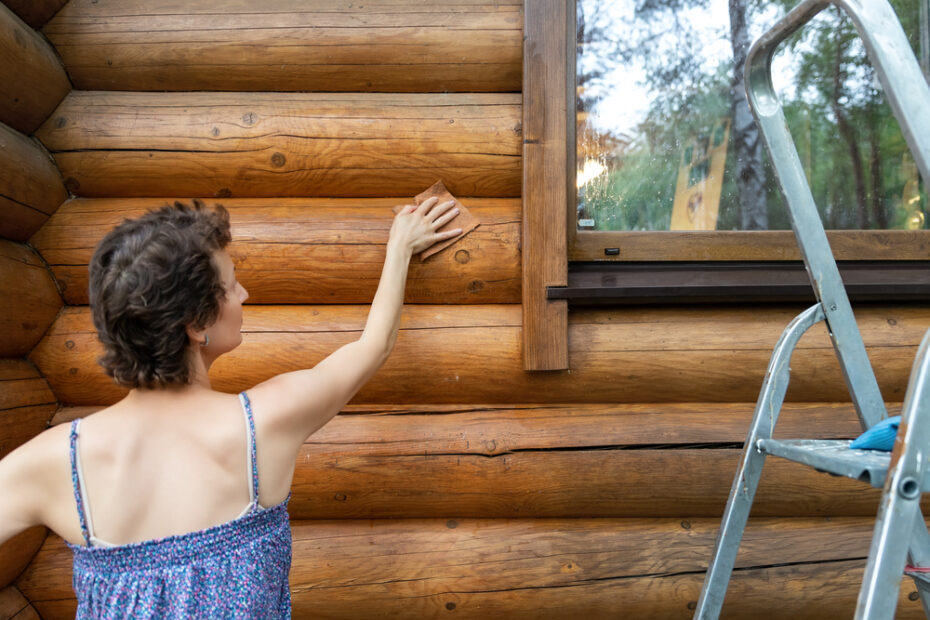Each year having regularly scheduled cleaning sessions will ensure that your home is maintained and is in great shape for years to come. We like to do deep cleaning going into the Fall and Spring seasons.
However, deep cleaning can be a little stressful but getting started with the basics can help minimize the hassles and make it simple to get your cabin tidied up.
The following list will help you make your log house sparkling clean for this beautiful season ahead.
First of All, Start at the Top:
Start from the ceiling, ceiling fans, and tops of windows. Dust these areas first so you don’t have to clean everything beneath again and again. And before you start cleaning the ceiling, remove any curtains and other window treatments so you don’t throw more dust on them while you are cleaning the other spots.
Clean the Walls and Windows:
Once you have cleaned the upper areas, move to the windows and walls. Choose the right cleaning solutions with log home experts specially designed for whatever materials they are meant for.
For example, most wood walls can be cleaned with a clean, soft rag, to remove cobwebs, dirt, and other debris. Our favorite method is to use Murphy’s Oil Soap per the label’s instructions once a year.
Work on the Vents:
Don’t forget to clean your vents. Remove the entire vent covers and clean the dust settled within. Now is a great time to think about replacing the filters.
Exterior Cleaning:
Make sure to pay attention to the exterior of your cabin too. This is the part that has been exposed to rain, snow, sunlight, and debris making regular cleaning a necessary task.
That’s why a good wash can remove all those build-ups of mold, mildew, pollen, and dirt. It not only improves the appearance of your log home but also extends the life of your wood finishes. We recommend that you NEVER power wash your home but rather wash it gently with a mixture of water and a cleaner made for logs like PermaChink’s Log Wash.
Check the Downspouts and Gutters:
Also, check your downspouts and gutters for any draining problems and leakages.
Make sure the water is draining away from your foundation. Clear all the fall and winter debris from the roof so water can properly drain from these areas into the gutter.
Trimming the Trees:
As spectacular as they can be, shrubs, trees, and other plants placed too close to your cabin can pose a threat to your home.
Therefore, plant them away from your home’s exterior walls, this will keep the moisture level in check.
Trim back any trees that might be too close to your log wall to let air flow around plants and the wall to prevent the growth of mold/mildew.
Sealing Gaps and Cracks:
During the winters, gaps and cracks can occur as your log home is likely to shrink and expands over time.
Never fill the cracks in the logs. What happens is the logs are always expanding and contracting from heat and cold and will pull away from the caulk making a hairline opening between the wood and caulk. The water can seep down in behind the caulk, but now that you have filled the majority of the opening, it cannot dry out and will cause log rot. It is better to leave them open and apply a little Shell Guard borate concentrate into the larger ones.
The exception is if the ‘check’ or crack is running into a corner, door, or window jamb and allowing wind, water, or bugs to get inside. Then you must fill them. Just be sure to inspect them 2-3 times per year for failure and repair. If you must fill a check use a latex caulk made for log homes like Permachink’s Energy Seal or Sashco’s Conceal. NEVER USE SILICONE OR CHINKING as they aren’t made for this type of application.
We hope these tips help you get your cabin clean and in well-working order for the beautiful months ahead.
What do you think? Let us know by commenting below!
I hope this was helpful. Browse some of our log home questions from log homeowners like you.
Question 1 | Question 2 | Question 3
See you soon,

